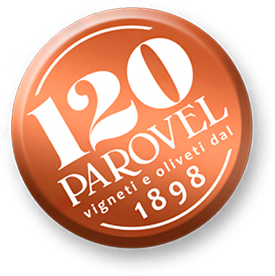
"The Green Gold Culture in Trieste has ancient roots, but it has never been easy. It was the Phoenicians that brought the olive trees on the hills surrounding the most northern bay of the Adriatic sea. Later the Romans came to produce olive oil on these limestone lands, nestled between cliffs and sinkholes, near the coast. they learnt to challenge the frequent frosts and bora, katabatic wind that often blows over one hundred kilometers per hour. the activity becomes profitable and already at that time each farm in Trieste and Istria has its own olive press. Through the centuries the Julian olive growing has its moments of prosperity and business development, but also stagnation. The activity blooms in the Venetian era, but it will take years of hard work, perseverance and dedication, to get to today's results. " Thus the article by Carla Ciampalini begins on Food24, Nutrition blog of Il Sole 24 Ore in which a contribution by Elena Parovel appears, interviewed for the occasion: "«Quality and territorial belonging are the two qualitative elements of our olive oil» explains Elena Parovel, president of the Committee for the extra virgin olive oil exploitation and promotion in the province of Trieste. So, conventional techniques over the years have been able to combine the ability to exploit technological innovations that led to strict checks of the entire chain, from cultivation to production, to evo oils storage. An effort that has allowed us to reach in 2004 the protected designation of origin, the product Tergeste Dop guarantees an undisputed environmental, landscape and economic value.
Unique fruit and prized of karst plateau terrace is the bianchera plant which gives large and bright green olives. It is an indigenous plant that bears the wind, the cold and vigorous pruning well. Its name comes from the fact that the change of color is late and progressive, and almost never complete even with advanced maturity, from mid-November onwards.» This broad article that wonders about the production of excellence of this part of Friuli Venezia Giulia, Elena Parovel adds ”«The harsh winters and hot summers, typical of our climate, cause suffering to the olive trees, that to protect themselves from bad weather produce more polyphenols as natural protection shield» . from a organoleptical point of view, the oil smells ruity, while the taste has a characteristic note of bitter and spicy. The production remains limited. The six hundred farmers operating in the area cultivate a total cultivated area of one hundred and twenty hectares. the yield is four thousand tons of olives, about six hundred tons of olive oil per year. The reputation and distribution of extra virgin olive oil transcends national boundaries and reaches not only Europe - Slovenia, Austria, Germany, Holland and Belgium - but also the United States, China and Taiwan. «Our ancestors have already indicated in ancient times that the road to the olive growing passes through the quality that we get here with care, the love for the olive tree, for its fruit and its juice». A quality that is still the best guarantee for the future development of the supply chain."




